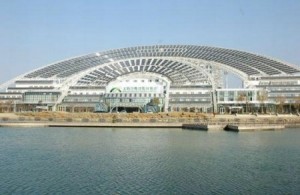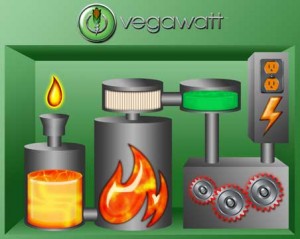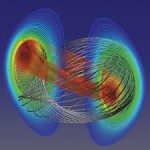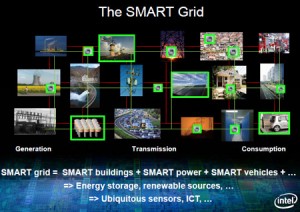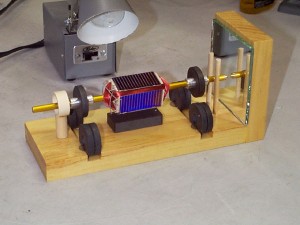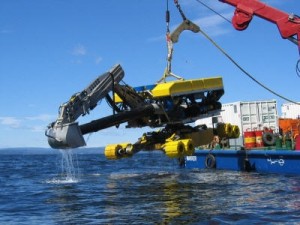After a semester long of conducting various experiments to learn through actual observations different scientific theories, we were given the opportunity to create and exhibit to another science class our own experiment. As a group we took this challenge as an opportunity to demonstrate our understanding of energy and its many sources. Our first impulse was to build an experiment based on renewable energy such as solar or wind power. Then after thorough discussions we concluded that given the chance to teach others on energy we should consider an experiment that incorporates both the utilization and the generation of energy. We were then reminded of one of the demonstrations of Mr. Vale in our class on the Peltier device, and that was our starting point.
What is the Peltier Effect?

The Peltier effect is when electrical current flows through two dissimilar conductors and depending on the direction of current flow the conductors will either absorb or release heat.
Background
The Peltier effect is named after the French physicist Jean Charles Athanase Peltier (1785–1845), who discovered it in 1834 – eight years after Thomas Seebeck published his results on the first thermoelectric effect, which bears his name.

Peltier found that the junctions of dissimilar metals were heated or cooled, depending upon the direction in which an electrical current passed through them.
Peltier Device

A ‘typical’unit is a few millimeters to a few centimeters thick and is looks like a sandwich formed by two ceramic plates with an arrangement of Bismuth Telluride in between. It is important to emphasize that inside the Peltier device we will find the p-type and the n-type semiconductors which are normally connected through cooper material.
Why is it relevant?
Peltier devices are used to build refrigerators or to convert thermal energy into electric energy. Other usage of this technology is applied to generate power for satellites or space shuttles because the battery life is not sufficient. Central Processing Units for PC have also benefited from the Peltier effect. One of the most common usages, one that we come across in our everyday life would be the camping coolers.
EXPERIMENT
Objective
The purpose of the experiment is to determine how changes in temperature affect the levels of electrical voltage generated and vice versa where input of voltage would create temperature differences in the Peltier device. We will then determine what and if there is a correlation between these concepts.
To familiarize the students with the terms we would be using we have noted down some important ones.
Heat – Energy transferred in a thermodynamic system through kinetic energy. Energy is transferred from particle to another in thermal conduction. Also known as heat energy
Thermoelectric Effect – It is the direct conversion of temperature (heat energy) to electric voltage. Temperature difference created when voltage is applied and generated when varying temperatures are applied. Also known as the Peltier Effect
Voltage – the electric driving force that determines an electric current. Voltage is the equivalent to energy per unit.
Voltage Source – an electric circuit in which the voltage across is different than the voltage within.
Conducting the Experiment
 Our experiments consists of two parts: the first is to generate noticeable temperature differences in the Peltier device by applying two different voltage measurements 2V and 5V; while the second is to generate voltage by increasing the temperature differences in the device through an ice cube.
Our experiments consists of two parts: the first is to generate noticeable temperature differences in the Peltier device by applying two different voltage measurements 2V and 5V; while the second is to generate voltage by increasing the temperature differences in the device through an ice cube.
When we were presenting the experiment to the class, the group had some technical difficulties because the devices are very sensitive and do overheat quickly. Regardless, we were able to deliver substantial results to demonstrate the application of the Peltier effect.
RESULTS
In the first part of the experiment, when we applied two different voltage inputs we recorded a temperature difference between 5 to 7 degree Celsius. While during the second part of the experiment, we measured the voltage output in two scenarios: first we just held the device in the hand, so that the warmth of the hand would create temperature difference with the cold side- the results was about 0.1 joule in voltage. In the second scenario we placed an ice cube on the cold side of the Peltier device- the results were significant- we generated almost 2 joule of voltage.

Impressions
The group presentation can be considered an overall success. During our demonstration of the Peltier effect the class seemed to enjoy the experiment; several members of the class came and experienced firsthand how the device works and felt the temperature differences of the device. The students who participated in the experiment enjoyed what they discovered. Throughout the presentation we were asked questions such as: what this device is used for in the present and what is the cost of the device. The class as a whole was polite and seemed interested in what it was that we were trying to convey to them. To make more interesting we emphasized on the importance of such effect and its current usage in space shuttles, coolers, and CPU. We also pointed out that we all should be thankful to Mr. Peltier, as it is because of him that people today enjoy appliances such as refrigerators.
TEAM:
Gentiana Spahiu, Courtney Hughes, Caroline Gendron, Helene Aufranc, Anna Sideri, Belcium Birilik






